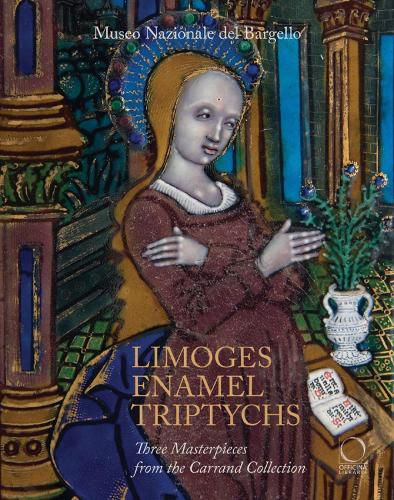Readings Newsletter
Become a Readings Member to make your shopping experience even easier.
Sign in or sign up for free!
You’re not far away from qualifying for FREE standard shipping within Australia
You’ve qualified for FREE standard shipping within Australia
The cart is loading…






The French city of Limoges was world famous for the production of champleve enamels during the Middle Ages. During the Renaissance a revival of Limoges enamels took place, but the technique employed was that of painted enamel. Triptychs with a sacred subject, conceived as a painting but shining like jewellery and built with durable materials, became popular. The three works held at the Bargello National Museum in Florence are attributable to Nardon Penicaud (1470 1542), a primary artist with an active workshop. The three enamel paintings came from the famous collection of Louis Carrand, a Lyon antiquarian, who donated them to the Bargello in the 19th century. Their story is told in Ilaria Ciseri’s essay. Paola Venturelli analyses the historical and artistic aspects of the works and places them in the context of contemporary enamel production. The final contributions from the Opificio delle Pietre Dure address the conservation of the three delicate enamels and analyses materials and pigments. AUTHORS: Ilaria Ciseri is an art historian, since 2014 she has been curator at the Bargello National Museum in Florence and she has worked on numerous scientific publications.
Paola Venturelli teaches History of Lombard Art at the University of Como. She has published essays on the history of goldsmithing and the sumptuary arts of Lombardy. SELLING POINTS: . The tryptichs, that for the occasion have undergone extensive conservation work, will be housed from June 2022 in a new air-conditioned showcase
6 b/w illustrations
$9.00 standard shipping within Australia
FREE standard shipping within Australia for orders over $100.00
Express & International shipping calculated at checkout
The French city of Limoges was world famous for the production of champleve enamels during the Middle Ages. During the Renaissance a revival of Limoges enamels took place, but the technique employed was that of painted enamel. Triptychs with a sacred subject, conceived as a painting but shining like jewellery and built with durable materials, became popular. The three works held at the Bargello National Museum in Florence are attributable to Nardon Penicaud (1470 1542), a primary artist with an active workshop. The three enamel paintings came from the famous collection of Louis Carrand, a Lyon antiquarian, who donated them to the Bargello in the 19th century. Their story is told in Ilaria Ciseri’s essay. Paola Venturelli analyses the historical and artistic aspects of the works and places them in the context of contemporary enamel production. The final contributions from the Opificio delle Pietre Dure address the conservation of the three delicate enamels and analyses materials and pigments. AUTHORS: Ilaria Ciseri is an art historian, since 2014 she has been curator at the Bargello National Museum in Florence and she has worked on numerous scientific publications.
Paola Venturelli teaches History of Lombard Art at the University of Como. She has published essays on the history of goldsmithing and the sumptuary arts of Lombardy. SELLING POINTS: . The tryptichs, that for the occasion have undergone extensive conservation work, will be housed from June 2022 in a new air-conditioned showcase
6 b/w illustrations